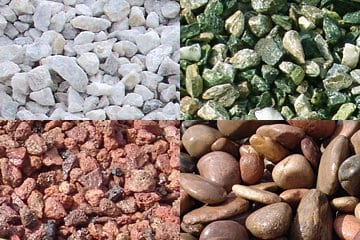Sintered or Frittage stone is a relatively new material quickly revolutionizing the construction world. Made from natural minerals and other materials, sintered stone has gained popularity among architects and designers due to its durability, versatility, and aesthetic appeal. In this article, you will explore how this stone changes the face of construction, examining its properties, benefits, and applications.
Table of Contents
Properties of These Stones
This unique material has several desirable properties, including durability, strength, and scratch resistance. The stone’s high density and low porosity make it highly resistant to staining and bacteria growth, making it an excellent choice for areas that require high levels of hygiene, such as kitchens and bathrooms. This stone is heat-resistant and can withstand high temperatures without cracking or melting, making it a perfect choice for areas that experience high heat levels.
Benefits of the Stone
Frittage stone offers several benefits over traditional building materials, including its durability, versatility, and sustainability. It is a long-lasting material requiring minimal maintenance, making it an excellent choice for indoor and outdoor applications. The stone’s versatility makes it suitable for various applications, such as countertops, flooring, and wall cladding. Moreover, this stone is a sustainable material, as it is made from natural minerals and requires less energy to produce than other materials, such as quartz or marble. Its durability and sustainability make it a cost-effective choice in the long run.
Applications of Porcelain Stone
Frittage stone can be used in various applications due to its durability and versatility. It is commonly used for flooring, wall cladding, and countertops in the construction industry. It is also becoming increasingly popular for outdoor applications such as exterior facades, landscaping, and swimming pool surrounds. Additionally, it can be used for furniture, as well as for art installations and sculptures. Its unique aesthetic appeal and design versatility make it an attractive choice for many applications.
Advantages in Construction
Porcelain stone has several advantages in the construction industry. The stone’s high durability and scratch resistance make it an excellent choice for areas that experience heavy foot traffic or require regular cleanings, such as hospitals and schools. Its low porosity makes it highly resistant to stains and bacteria growth, making it an ideal material for kitchen countertops and other areas requiring high hygiene levels. Furthermore, this stone’s versatility allows it to be used in different applications, from interior design to exterior facades, making it a popular choice among architects and designers.
Installation and Maintenance
Installation and maintenance of frittage stone are relatively straightforward. The material is typically cut to size and installed using standard construction techniques. Once installed, it requires minimal maintenance, with regular cleaning using mild detergents sufficient to keep it looking new. This is highly resistant to staining and bacteria growth, making it easy to clean and maintain. The stone’s low maintenance requirements and longevity make it a cost-effective choice over the long term.
Cost-Effectiveness
Ceramic stone is a cost-effective material offering several long-term benefits over traditional building materials. Although it may have a higher upfront cost than other materials, its durability and low maintenance requirements make it a cost-effective choice in the long run. Moreover, the stone’s sustainability and eco-friendliness make it an attractive option for those looking to reduce their environmental footprint. Its sustainability and durability make it a wise investment in the future of a building project.
Conclusion
Sintered stone is transforming the construction world with its versatility and durability. As the construction industry continues to evolve, it is expected to play an increasingly important role in shaping the future of modern architecture and design. With its sustainability, durability, and aesthetic appeal, porcelain stone will remain popular among architects, designers, and construction professionals.



